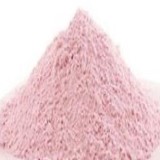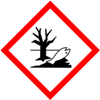 |
Calamine SDS Safety Data Sheet of Supplier Exporter Manufacturers' Representative |
Email: info@ammol.org |
Call Toll Free +1-855-552-6665 |
Calamine
CAS Number: 8011-96-9

Calamine
Calamine SDS, Safety Data Sheet
MSDS Sheet, Material Safety Data Sheet 04-Feb-24
Section 1: Chemical Product and Company Identification
Product Name & Other Names: Calamine
CAS Number: Mixture also called 8011-96-9
Relevant uses and uses advised against (if any): Industrial Manufacturing.
Supplier: American Molecules, 9910 Bent Oak Dr, Houston, TX 77040, USA.
Call Toll Free: 1-855-55-AMMOL 1-855-552-6665.
In case of emergency contact: Will be given with the supply.
Section 2: Hazards Identification
GHS, Globally Harmonized System Classification in accordance with 29 CFR 1910
Classification according to Regulation (EC) No 1272/2008
Hazardous to the aquatic environment, long-term hazard Category 1 (H410)
Labeling according GHS & Regulation (EC) No 1272/2008
GHS Label Elements  Aquatic Toxicity |
Signal Words: Warning
Hazard statements:
H410: Very toxic to aquatic life with long lasting effects
Precautionary statements:
P273: Avoid release to the environment.
P391: Collect spillage.
P501: Dispose of contents/container in accordance with local/regional/national/international regulation.
Section 3: Composition and Information on Ingredients
Ingredient 1: Zinc Oxide
CAS Number: 1314-13-2
EINECS EC-No.: 215-222-5
% by Weight: >90%
Ingredient 2: Diiron trioxide
CAS Number: 1309-37-1
EINECS EC-No.: 215-222-5
% by Weight: < 5%
Section 4: First Aid Measures
Always get medical attention after the first aid is over.
Eye Contact: Flush eyes with plenty of water for at least 15 minutes, occasionally lifting the upper and lower eyelids. Get medical aid.
Skin Contact: After contact with skin, wash immediately with plenty of water. Gently and thoroughly wash the contaminated skin with running water and non-abrasive soap. Be particularly careful to clean folds, crevices, creases, and groin. Cover the irritated skin with an emollient. If irritation persists, seek medical attention.
Inhalation: Remove from exposure and move to fresh air immediately. If not breathing, give artificial respiration. If breathing is difficult, give oxygen. Get medical aid if cough or other symptoms appear.
If swallowed: Never give anything by mouth to an unconscious person. Rinse mouth with water. Consult a physician.
Section 5: Fire and Explosion Data
Flammability of the Product: Non-flammable.
Auto-Ignition Temperature: Not applicable.
Products of Combustion: Zinc Iron & their oxide.
Suitable extinguishing media: Use water spray, alcohol-resistant foam, dry chemical or carbon dioxide.
Special Information: In the event of a fire, wear full protective clothing and NIOSH-approved self-contained breathing apparatus with full face piece operated in the pressure demand or other positive pressure mode. At high temperatures under fire conditions, it may produce toxic or irritating fumes.
Section 6: Accidental Release Measures
Personal precautions, protective equipment, and emergency procedures: Ventilate area of leak or spill. Avoid breathing dust/fumes/gas/mist/vapors/spray. Use individual protective equipment (waterproof boots, suitable protective clothing, safety glasses, etc.). Restrict unprotected personnel from the area. Prevent any contact with hot surfaces. Do not approach facing the wind.
Environmental precautions: Do not let the product enter drains, soil, or water sources.
Methods and materials used for containment Cleanup procedures and Storage: Contain spilled material. Cover with an inert, non-combustible absorbent material, (e.g. sand, earth, diatomaceous earth, vermiculite). Vacuum or sweep-up and remove to an approved disposal container.
Section 7: Handling and Storage
Precautions for safe handling: Apply according to good manufacturing and industrial hygiene practices. Ensure proper ventilation. In case of insufficient ventilation, wear suitable respiratory equipment. Wash thoroughly after handling. Do not drink, eat, or smoke while handling. Avoid contact with skin, eyes, and clothing. Minimize dust generation. Avoid breathing dust/fumes/gas/mist/vapors/spray. Keep container tightly closed. Avoid ingestion and inhalation. Use individual protective equipment (waterproof boots, suitable protective clothing, safety glasses, etc.).
Conditions for safe storage, including any incompatibilities: Store in cool, dry, and ventilated area away from heat sources and protected from sunlight in tightly closed original container. Keep air contact to a minimum. Store protected from heat, sparks and ignition sources and incompatible materials. Avoid contact with skin and eyes. Avoid inhalation of dust/mist/vapor. Do not store with incompatible materials like strong oxidizing agents and acids.
Section 8: Exposure Controls/Personal Protection
Occupational Exposure Limits for Zinc Oxide:
USA ACGIH, ACGIH TWA (mg/m³): 2 mg/m³
USA ACGIH, ACGIH STEL (mg/m³): 10 mg/m³
USA OSHA, OSHA PEL (TWA) (mg/m³): 5 mg/m³
USA NIOSH, NIOSH REL (TWA) (mg/m³): 5 mg/m³
Occupational Exposure Limits for Diiron trioxide:
USA. ACGIH Threshold Limit Values (TLV) (mg/m3) (TWA) 5
Engineering Controls: Use process enclosures, local exhaust ventilation, or other engineering controls to keep airborne levels low.
Ventilation System: A system of local and/or general exhaust is recommended to keep employee exposures as low as possible.
Personal Respirators (NIOSH Approved): For conditions of use where exposure to dust or mist is apparent and engineering controls are not feasible, a particulate respirator may be worn.
Skin Protection: Wear protective gloves and clean body-covering clothing.
Eye Protection: Use chemical safety goggles and/or full face shield where dusting or splashing of solutions is possible. Maintain eye wash fountain and quick-drench facilities in work area.
Other Control Measures: Maintain good housekeeping in work area. Handle in accordance with good industrial hygiene and safety practice. Wash hands after handling.
Section 9: Physical and Chemical Properties
Appearance: Pink-yellowish powdered solid.
Odor: Odorless.
Odor threshold: No data found.
pH: No data found.
Relative density: around 5.6
Melting point/freezing point: No data found.
Initial boiling point and boiling range: No data found.
Flash point: No data found.
Auto-ignition temperature: No data found.
Decomposition temperature: No data found.
Upper/lower flammability or explosive limits: No data found.
Vapor pressure: No data found.
Vapor density: No data found.
Evaporation rate: No data found.
Flammability (solid, gas): No data found.
Partition coefficient: n-octanol/water: No data found.
Solubility: Very slightly soluble in cold water, hot water.
Viscosity: Not available.
Section 10: Stability and Reactivity Data
Stability: It is stable.
Incompatibility with various substances: Strong oxidizing agents & acids.
Polymerization: None reported.
Section 11: Toxicological Information
LD50 Oral: No data found.
LC50: No data found.
Carcinogenicity: Not listed as a suspected/confirmed carcinogen by ACGIH, IARC, NTP, SHA.
Mutagenic Effects: No data found.
Teratogenic Effects: No data found.
Developmental Toxicity: No data found.
Reproductive Effects: No data found.
Section 12: Ecological Information
Toxicity to fish: LC50 - No data found.
Toxicity of the Products of Biodegradation: Insoluble in water. (can be separated from aqueous systems by sedimentation and/or filtration techniques). An environmental hazard cannot be excluded in the event of unprofessional handling or disposal. Very toxic to aquatic life.
Persistence and Degradability: Likely to persist.
Mobility: Predicted to have low mobility in soil.
Bioaccumulation/ Accumulation: No data found.
Results of PBT and vPvB assessment: No data found.
Section 13: Disposal Considerations
Waste Disposal: Dispose all waste in accordance with legal requirement.
Section 14: Transport Information
Land Transport
DOT USA: Not a DOT controlled material (United States).
ADR/RID Europe:
UN3077: ENVIRONMENTALLY HAZARDOUS SUBSTANCE SOLID N.O.S. (Zinc Oxide)
Transport hazard Classes: 9
Packing group: III
Environmental hazards: Yes
Sea Transport IMDG/IMO:
UN3077: ENVIRONMENTALLY HAZARDOUS SUBSTANCE SOLID N.O.S. (Zinc Oxide)
Transport hazard Classes: 9
Packing group: III
Environmental hazards: Yes
Air Transport IATA/ICAO:
UN3077: ENVIRONMENTALLY HAZARDOUS SUBSTANCE SOLID N.O.S. (Zinc Oxide)
Transport hazard Classes: 9
Packing group: III
Environmental hazards: Yes.
Section 15: Other Regulatory Information
USA:
SARA 311/312 Hazards: See section 2.
California Prop. 65: Not applicable.
Section 16 - Additional Information
Disclaimer:
**************************
Our company provides this MSDS sheet in good faith but makes no representation as to its comprehensiveness or accuracy. This SDS sheet is intended only as a guide to the appropriate precautionary handling of the material by a properly trained person using this product. The above information has been compiled from various sources and has the possibility of discrepancy and being out-dated information. Individuals receiving the information must exercise their independent judgment and do further search in determining its appropriateness for a particular purpose. In no case shall our company be liable to loss or damages by the product user.
**************************
We can also supply Calamine of BP Ph Eur Grade.
Please visit Main Page of Calamine Suppliers.
American Molecules, also known as ammol.org is a distributor, supplier and manufacturers' representative of all types of Pharmaceuticals, Functional Ingredients, Excipients and Specialty Chemicals in Texas USA. Our principals manufacture supply and export USP NF BP, Ph Eur, etc grades of chemicals pure and reagent grade, mineral fortifiers, FCC food grade. Tailor made particle size and customized specifications are offered. The principal's facility is having one or more of the certifications like FDA approval and GLP, cGMP, ISO9001, ISO14001, ISO/IEC 17025, ISO22000, FSSC 22000, ISO45001, FSSAI, Kosher, HALAL, COPP, WHO-GMP certified and Written Confirmation (WC) for export to Europe is available. The manufacturers suppliers and exporters observe WHO Good Manufacturing Practices and Good Laboratory Practices.





Suppliers and Manufacturers' Representative:

9910 Bent Oak Dr
Houston, TX 77040, USA
Call Toll Free: 1-855-55-AMMOL 1-855-552-6665
Email: info@ammol.org